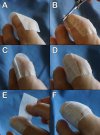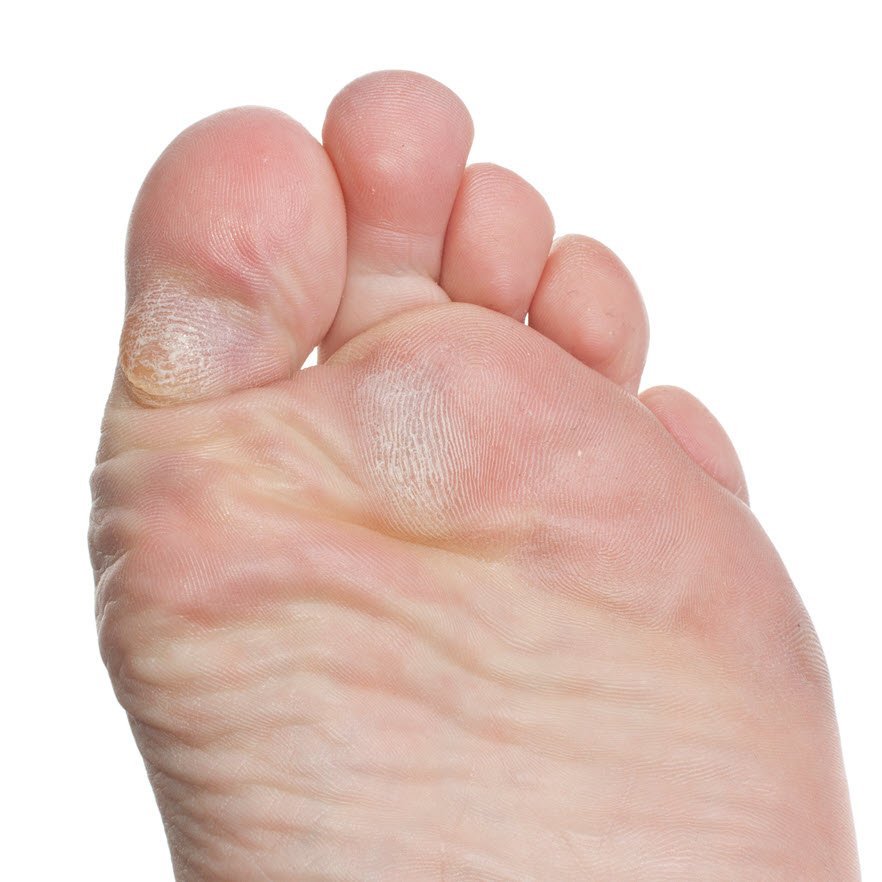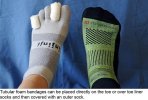Oh, I forgot to mention another solution I developed for toe issues. I call them toe casts. Here's an excerpt from a guidebook I wrote on hiking the El Camino Real (FYI, the book is no longer in distribution).
The toe cast system is something I developed during my running days to prevent blisters and hot spots. It is quite possible that someone else thought of this before me, but I have yet to see a published reference to credit.
The casts are constructed from multiple layers of Nexcare (Micropore) paper tape. It is important not to substitute any other brand of tape because the adhesive and backing have unique properties suited for this use. The adhesive increases in strength when exposed to small amounts of moisture, such as inside a shoe. This allows the cast to stay in place though long hikes, and even through multiple showers. Shortly after a cast is applied, the paper layers fuse together to form a flexible cast-like material that acts like a protective layer of callused skin.
Toe socks help extend the life of the cast for up to a week, but typically I change them every 2 to 3 days to prevent characteristic foot odors from developing. It is important to allow them to thoroughly dry after a shower and exposing them to air overnight is sufficient (another reason not to shower the morning of a hike). They adhere quite strongly to skin and may be difficult to remove when they are dry but are easily removed when wet. Therefore,
when you decide to remove a toe cast, do so within a half hour of showering or bathing while they are still wet.
Figures A through F show construction of a toe cast on a big toe. The method is similar for all toes, but the middle toes are more challenging because you need to work around other toes. If you desire a thicker cast apply additional layers of tape. If a blister has already formed, apply the toe cast directly over the blister once the blister is drained. Additional drainage will be absorbed by the cast. A
tubular foam toe bandage can be placed over the toe cast to cushion the blister. Another option is to drain the blister and apply a small bandage or moleskin over the blister and then apply the toe cast over the bandage. Silicone anti-chafe cream can be applied over the cast to give it more glide within the sock. Petroleum jelly tends to soften the adhesive, lessen the life of the toe cast, and leave more adhesive residue on the skin than silicone anti-chafe creams.
Toe cast application (see figure below)
A) Cut a piece of Nexcare (Micropore) paper tape approximately twice the length of the toe and apply it over the toe, securing it lightly to the sides of the toe.
B) Press the edges of the tape to the skin on all sides and cut off the corners that form at the top of the toe.
C) Cut a second piece of tape approximately the same length as the first one and lightly secure it perpendicular to the first piece.
D) Press the edges of the second piece of tape to the toe and cut off the corners that form at the top of the toe. Firmly secure all edges of the tape to the toe.
E) Cut a third piece of tape about twice the diameter of the toe. Secure one end to the toe and wrap it around the toe over the first two pieces of tape.
F) Apply gentle pressure to the completed toe cast. If you have a silicone-based anti-friction cream available, apply a small amount to the toe cast to give it more glide within the sock.




















